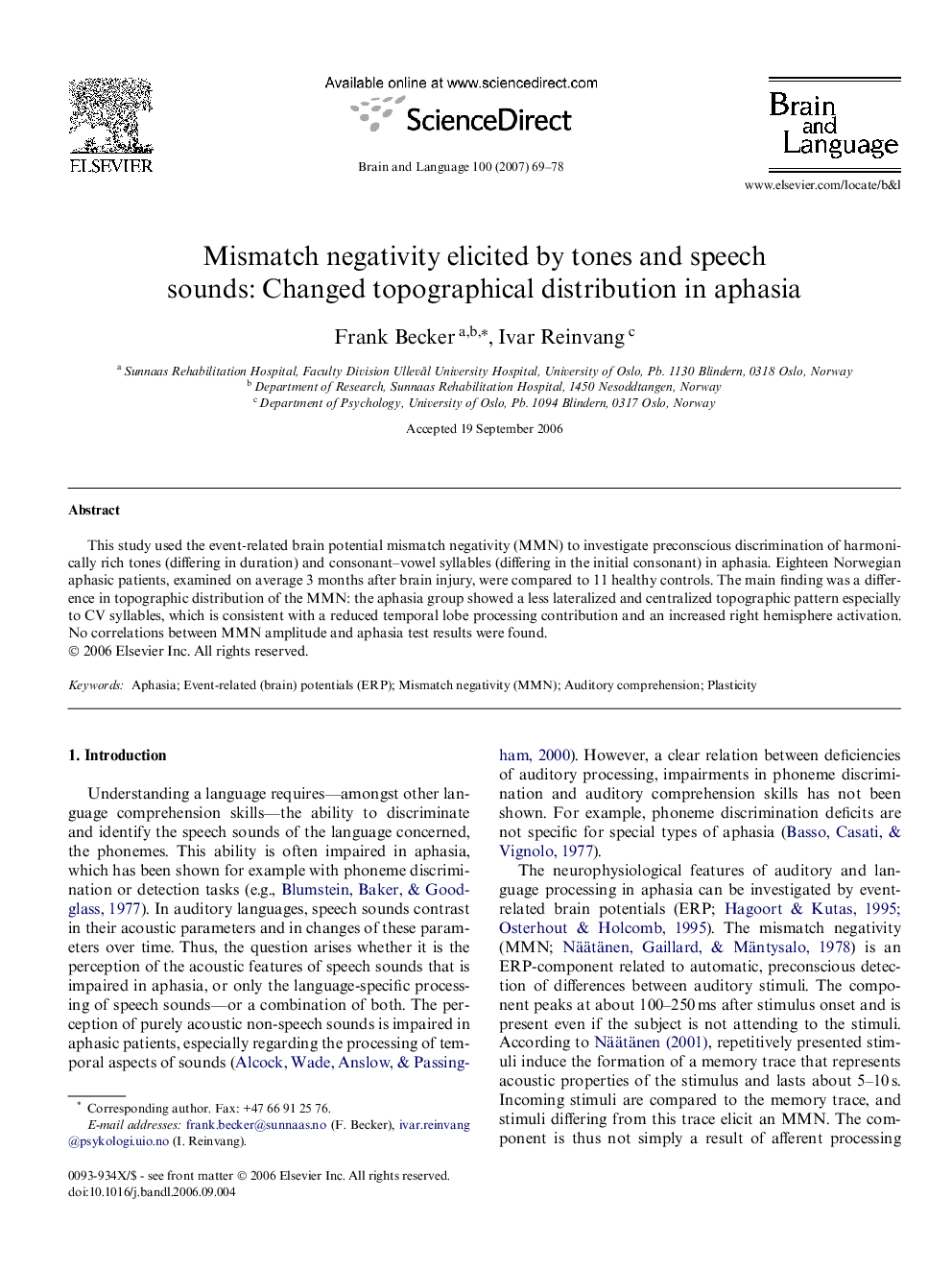| Article ID | Journal | Published Year | Pages | File Type |
|---|---|---|---|---|
| 926145 | Brain and Language | 2007 | 10 Pages |
Abstract
This study used the event-related brain potential mismatch negativity (MMN) to investigate preconscious discrimination of harmonically rich tones (differing in duration) and consonant–vowel syllables (differing in the initial consonant) in aphasia. Eighteen Norwegian aphasic patients, examined on average 3 months after brain injury, were compared to 11 healthy controls. The main finding was a difference in topographic distribution of the MMN: the aphasia group showed a less lateralized and centralized topographic pattern especially to CV syllables, which is consistent with a reduced temporal lobe processing contribution and an increased right hemisphere activation. No correlations between MMN amplitude and aphasia test results were found.
Related Topics
Life Sciences
Neuroscience
Biological Psychiatry
Authors
Frank Becker, Ivar Reinvang,
